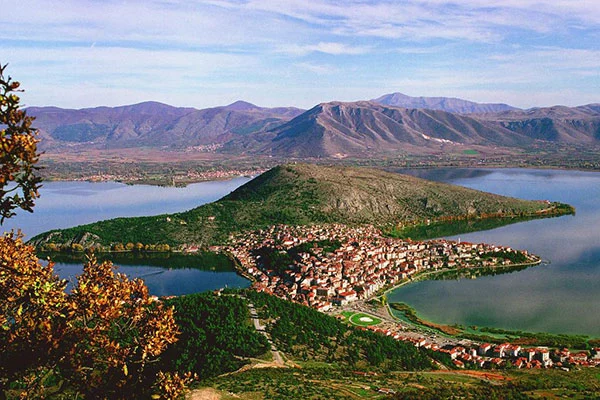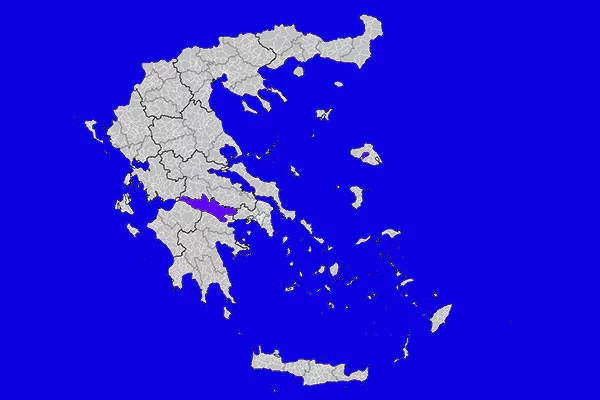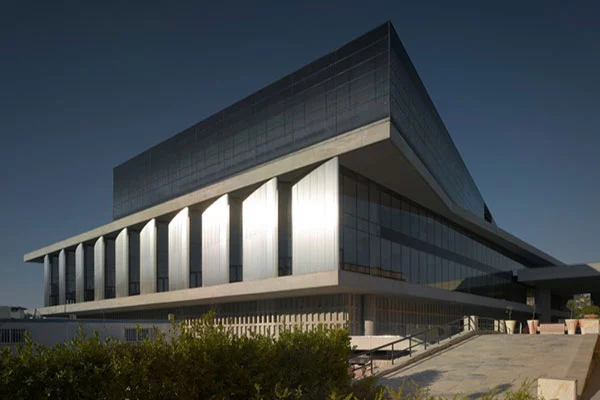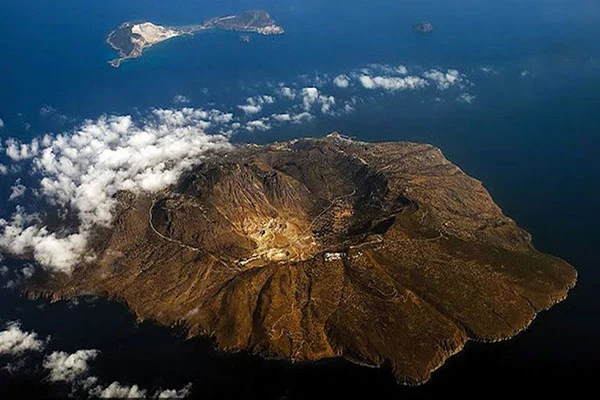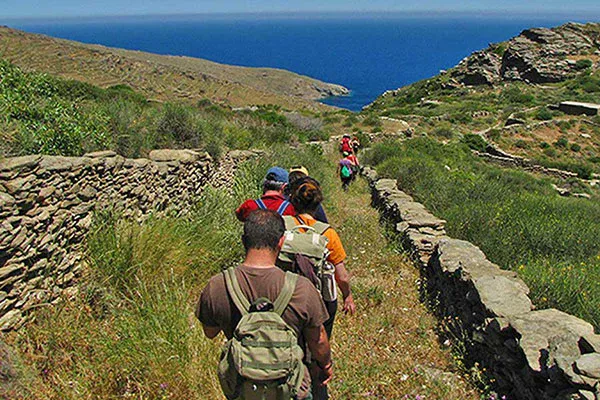
The medieval village of Palaiochora in Aegina
This hidden gem of medieval religious architecture lies about 2 kilometres north-east of the Monastery of Agios Nektarios and 7 kilometres from the main port of Aegina. So when you plan a visit to the holy monastery, be sure to have enough time also for the Archeological site of Palaiochora as this place, once featuring 366 churches and 800 houses, is definitely worth a visit.
When you are on foot, you can start your journey already on the upper level of the monastery, exit the gates and head north by the main road. A tip: be sure to fill your water bottle in the monastery as the tap water is fresh and good and you are definitely going to need plenty of it when doing the uphill climbing.
Small churches, scattered randomly on the hill, are sure to grasp your attention and make you curious about the site when walking there. The place is famous for its good views, the history and the fact that it was the capital of the island until 1826. The architecture from the early christian time suggests that the building activity on the site was continuous from ancient times. Palaiochora may have received several waves of inhabitants due to the continuous raids of Arabs on the coastal settlement of Aegina in the 9th century. Natural springs and wells provided these days the water supply which suggests that the population rose and the place turned into a lively settlement.
The number of basilicas preserved until now is 38, most of them in very good condition and having frescos inside. The Church of Dionysos, the so-called Episcopi, is dated before the 14th century. On the slope east of the citadel the one-isled churches of Eleutherias, Minas and St.Makrina are located and have their doors open for you to take a look inside. On the easternmost point of the settlement there is the Monastery of Kyriaki. Built into the eastern wing, which is also part of the defensive walling, there is the Katholikon or the central church of the monastery. Wall paintings in the church of Kyriaki, dating from the 17th century, depict the scenes of the hymn being sung fifteen days before the Dormition of the Virgin and the Second Coming of Christ. South of the church oh Kyriaki is the church of Theologian, dating from the late 14th century. The domed church of Taxiarchis is standing beneath the citadel and is one of the oldest churches in Palaiochora.
The citadel of Palaiochora, 355 metres above sea level was built in 1462 during the first Venetian occupation. The inhabitants of Palaiochora used the money that the Venetians paid them when they bought the relic of St.George from them. This was originally held in the church of St. Katholikos.In 1537 Barbarossa completely destroyed the settlement. In 1540, however, when Aegina was handed over to the Turks, the churces were repaired and new houses were built. In 1654 the Venetian Morosini, wrecking the fortifications, plundered and destroyed the town. During the second Venetian occupation (1687-1715) Palaiochora gradually regained its old prosperity.
During the second Turkish occupation (1715-1821) the town was abandoned and the inhabitants moved gradually to the site of the ancient coastal settlement which became the first capital of the modern Greek state – Nafplio. When wandering around the slopes of this picturesque settlement, you can easily imagine the scenes of these bygone times. The churches are there – most of them open and even a candle lit inside. I was really wondering who might take the daily trouble to climb all the rocky paths and put the candle.
Although it is a perfect area for hiking – the stairs that take you to the first church, soon turn into a natural hiking path –, you should have in mind that it is not an easy walk. There are stretches when the paths tend to disappear and it is only up to your imagination to find the route again on the slippery and loose stones. Be sure to wear proper trecking shoes! But the hike is definitely worth the effort as the views from the slopes to the Saronic gulf are breath-taking. Yes, you might easily lose your breath when urging yourself to conquer the obstacles and aspire to the next marvellous view. Sitting on the rocks, colourful spring-flowers swaying in the wind by your feet and resting your eyes on the blue waters melting in with the sky in the distance, serves as a perfect pause to reflect upon yourself and letting the new perspectives of life sink in from the surroundings.
Be sure to climb to the very top as you can admire the sea-view there from almost all the sides around you. This is the moment you might lose the track of time and neglect the worries about the last bus going back to the town of Aegina. This was the case with me, as after the first glimpses of the beautiful churches and the views around, I let go of the plan to make it to the last bus at 15.30 in Agios Nektarios. The perspective of a 6 kms walk back to Aegina town on a flat ground didn’t seem a big deal at all.
Descending from the top might be challenging, as you can easily be tempted to take the different route down and have a closer look at a church you previously saw from the distance.Even when your walks down might lead you a little bit astray, there is the Monastery of Agios Nektarios always at your sight, not letting you to get lost!


